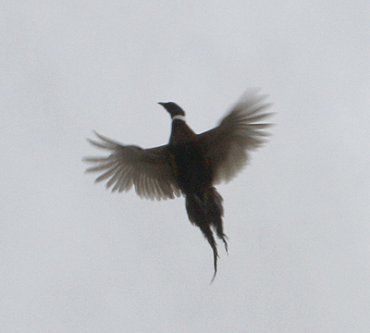The Utah Division of Wildlife Resources recently released pheasants at the Huntington game farm and at Desert Lake.
There were two releases a week apart with 135 birds being released each time. The pheasant and quail season opened on Nov. 5 and runs for one month on state and federal lands and for two weeks on private land.
It looks like pheasant and quail numbers are up in Utah. Bryan Berggren is a seasonal employee with the DWR and he lives in Price. He was the one who released the pheasants. He said that pheasants have declined in recent years and the DWR likes to plant as many birds as they are able to help the hunters have success and to also get the youth interested in pheasant hunting.
Justin Dolling, upland game and migratory game bird coordinator for the Division of Wildlife Resources, says lots of rain this past spring and early summer gave Utah’s pheasants and quail exactly what they needed-good nesting cover (which makes it harder for predators to find the birds) and plenty of insects for pheasant and quail chicks to eat.
Pheasants and quail nest in April and May. But if their first nesting attempt isn’t successful, they’ll nest again in early summer.
“Many of the birds’ first nesting attempts probably failed because of all the rain,” Dolling says. “But bird numbers appear to be up from last year, so it looks like the second nesting attempts were successful.”
Biologists don’t have long-term survey data for pheasants and California quail. But they do have long-term data for Gambel’s quail. And surveys conducted this past summer in the Mohave Desert in southwestern Utah-which is the only place Gambel’s quail are found in the state-indicate the number of birds is up.
In 2010, the highest number of Gambel’s quail and chukar partridge biologists saw at the two water holes they surveyed was 66 birds.
This past summer, the highest count was 90 birds. “And the birds were scattered more than they were last year,” Dolling says. “To have 90 birds come to the two waters holes, compared to 66 during a much drier year, indicates Gambel’s quail are doing really well.
Marshes are some of the best places to hunt pheasants in Utah. The DWR manages several wildlife management areas in Utah. Some of these WMAs have pheasants and quail on them.
Another option is getting written permission from a private landowner to hunt on his or her property.
Dolling encourages you to be polite and understanding if a landowner doesn’t give you access to his or her property. “But if they do give you access to the property,” he says, “you’ll not only end up with a good place to hunt; you might end up with a new friend.”
Dolling says you should not wait until the morning of the hunt to approach a landowner about hunting his or her property. “You need to get this permission several days before the hunt begins,” he says.
Wikipedia says this about pheasants. “Pheasants are characterized by strong sexual dimorphism, males being highly ornate with bright colors and adornments such as wattles and long tails. Males are usually larger than females and have longer tails. Males play no part in rearing the young. Pheasants typically eat seeds and some insects.
The best-known is the common pheasant, which is widespread throughout the world in introduced feral populations and in farm operations. Various other pheasant species are popular in aviaries, such as the golden pheasant.
Pheasant release at Huntington game farm

"This pheasant finds a new home at the game farm."
